- (888) 777-9102
- Learning Center

- How It Works
- All Packages & Pricing
- I-90 Application to Replace Permanent Resident Card
- I-129F Petition for Alien Fiancé
- I-130 Petition for Alien Relative
- I-131 Application for Travel Document
- I-485 Adjustment of Status Application
- I-751 Remove Conditions on Residence
- I-765 Application for Employment Authorization
- I-821D DACA Application Package
- I-864 Affidavit of Support
- N-400 Application for Naturalization
- N-565 Application to Replace Citizenship Document
- Citizenship Through Naturalization
- Citizenship Through Parents
- Apply For Citizenship (N-400)
- Apply for Certificate of Citizenship (N-600)
- Replace Citizenship Document (N-565)
- Apply for a Green Card
- Green Card Renewal
- Green Card Replacement
- Renew or Replace Green Card (I-90)
- Remove Conditions on Green Card (I-751)
- Green Card through Adjustment of Status
- Adjustment of Status Application (I-485)
- Affidavit of Support (I-864)
- Employment Authorization (I-765)
- Advance Parole Application (I-131)
- Adjustment of Status Fee
- Family-Based Immigration Explained
- Search the Learning Center
- Request Support
- Find an Immigration Attorney

Home » Blog » Advance Parole Travel with Adjustment of Status

Advance Parole Travel with Adjustment of Status
January 23, 2024 Apply for Green Card Travel Documents
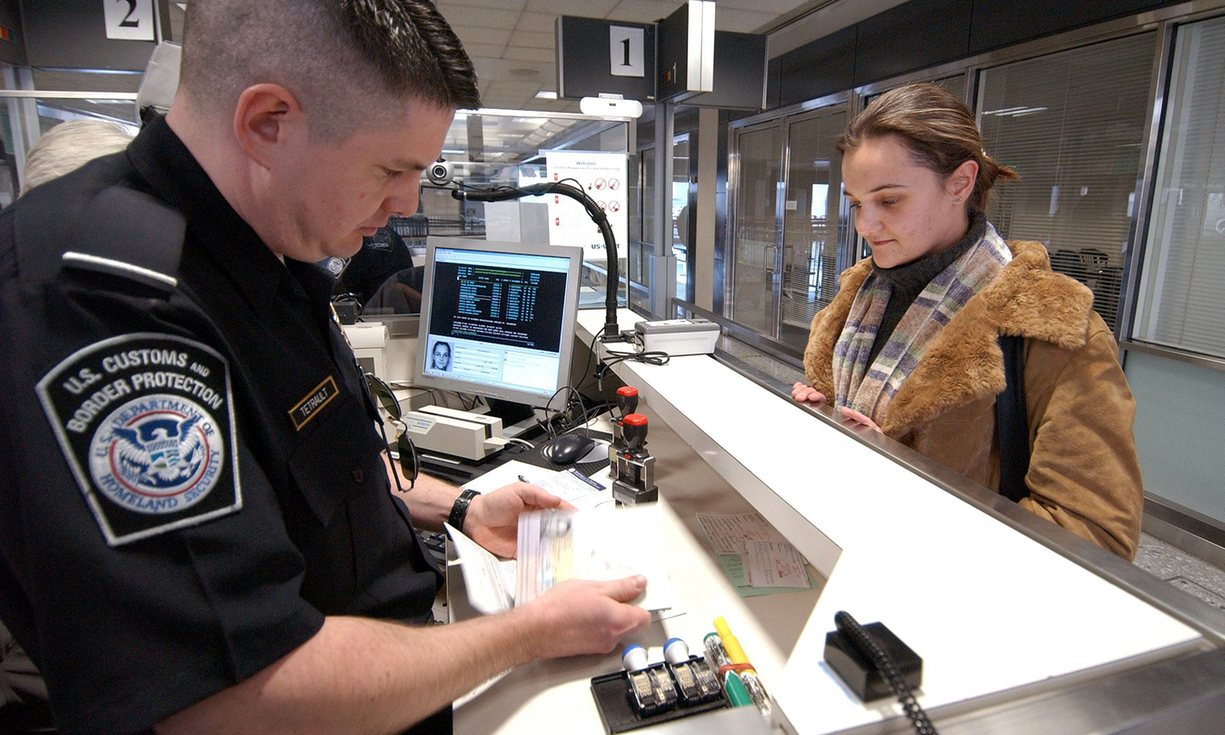
During the adjustment of status process, the applicant remains in the United States while waiting for their green card. But it can take several months to receive status as a permanent resident after filing Form I-485, Application to Adjust Status. Many applicants may want (or need) to travel abroad during this time for the purpose of visiting family, taking a vacation, or even tending to urgent matters. However, leaving without the proper documentation will likely put the beneficiary's adjustment of status application in jeopardy. Generally, an adjustment applicant that leaves the United States without an advance parole travel document will abandon the I-485 application and will have trouble re-entering.
Why is an advance parol travel document so important for I-485 applicants? How do I request advance parole with my adjustment of status case? How much does advance parole cost? What can I do if there is an urgent need to travel abroad? Does advance parole guarantee my re-entry to the U.S.? What else should I know about my advance parole travel document? Does every adjustment of status applicant need advance parole? How can I get help with this process
Why I-485 Applicants Must Obtain Advance Parole Travel Documentation
Non-citizens applying for a green card through adjustment of status generally must be approved for advance parole prior to leaving the United States in order to avoid the termination of their pending application for adjustment. Additionally, advance parole may be necessary to re-enter the U.S.
With a little planning, the adjustment of status applicant can obtain an advance parole document and easily avoid these problems. Advance parole for adjustment of status applicants resolves two issues:
- Allows the adjustment of status applicant to return to the U.S. after travel abroad without obtaining a visa; and
- Preserves a pending adjustment of status application (Form I-485) already filed with USCIS.
Typically, anyone with a pending I-485 that anticipates a need to leave the United States (even for a day) should obtain an advance parole travel document, but there are some exceptions to the requirement.
How to Apply for Advance Parole
Obtaining an advance parole travel document is fairly simple, particularly if you apply at the time of filing Form I-485, Application to Adjust Status.
Advance Parole Application Package
Adjustment of status applicants may use Form I-131, Application for Travel Document , to request Advance Parole. When preparing the advance parole application package, applicants should include all of the following items:
- Prepared and signed Form I-131, Application for Travel Document
- Copy of a government-issued identity document (with photo, name and date of birth) such as an Employment Authorization Card (EAD) or passport
- Two identical passport-style color photographs
- Copy of I-485 receipt notice (Form I-797C, Notice of Action) if I-485 was previously filed and is still pending
You can download the application and filing instructions from the USCIS website . Applicants that want some additional reassurance that their application is prepared correctly can use the CitizenPath. CitizenPath provides simple, step-by-step instructions and even guarantees that USCIS will approve the application. There is no sign up or fee to get started. You pay upon completion. Learn more about the Travel Document Package >
In most cases, there is no interview associated with the Form I-131 application.
When to Submit the I-131 Application
You may submit Form I-131 at any time that I-485 is pending. However, it's typically easiest (and fastest) to file Form I-131 concurrently with Form I-485
You may submit Form I-131 to request an advance parole travel document at the same time you submit your green card application. This is the quickest way to get your application in the queue for processing. If there's any chance you will travel while Form I-485 is pending, we recommend that you submit the application concurrently.
However, you may file Form I-131 at a later date if necessary. You will need the Form I-485 receipt number so that USCIS can link your case. We've found that I-131 applications submitted after the initial I-485 filing take longer to process.

Form I-485 Processing Time
Advance parole for adjustment of status applicants fees.
At the time of writing this article, there is no USCIS filing fee for Form I-131 when applying for an advance parole document based on adjustment of status. Normally, the Form I-131 fee for an advance parole travel document is $575. Specifically, there is no USCIS fee for advance parole if you filed a Form I-485 (adjustment of status application) on/after July 30, 2007, with a fee, and that I-485 application is still pending.
However, USCIS has announced a new fee structure that will change the filing fee for adjustment of status applicants. Once this new fee structure is implemented, I-485 will pay the full fee of $660 when filing Form I-131.
When filing Form I-131 for advance parole with a pending adjustment application, we recommend that you include a cover letter to explain why no fee is included. View a sample cover letter for Advance Parole >

New USCIS Fee Increase Published by Biden Administration
Urgent requests for an advance parole travel document.
USCIS processing times for Form I-131 are currently greater than six months for most cases. This could be a problem if you’re traveling for an extremely urgent situation. USCIS may expedite your case if you have a dire emergency and can evidence the urgent need to travel. USCIS is willing to consider an emergency request for advance parole on a case-by-case basis. You will need to provide evidence to support the emergency request (e.g. medical documentation, death certificate). If you are preparing your Advance Parole application through CitizenPath , we can also provide more detailed directions in your filing instructions.
What You Should Know About Advance Parole
An advance parole travel document is not a guarantee for re-entry to the United States. You are still subject to the standard immigration inspection at a port of entry to determine admissibility into the U.S.
If you have any period of unlawful presence in the U.S., consult with an attorney before filing Form I-131 or traveling abroad. Unlawful presence can include time after unlawfully entering the U.S. or time in the U.S. with an expired visa. If this may apply to you, speak to an experienced immigration attorney before attempting to request advance parole.
Generally, asylees and refugees should not travel to the country you claimed persecution. By returning to that country, your actions suggest that you do not fear persecution. Your application will be denied and could negatively affect your asylum/refugee status in the U.S. In some cases, there are legitimate reasons for returning to the country you claimed persecution. If this applies to you, please speak to an experienced immigration attorney before filing Form I-131.
Traveling with Advance Parole
Known formally as Form I-512L, Authorization for Parole of an Alien into the United States, the advance parole document, is often printed on a standard, letter-size piece of paper. It is generally valid for a period of one year. However, advance parole travel should be limited to a period of less than 90 days.
Applicants that applied for employment authorization concurrently may receive an Employment Authorization Card with “Serves as I-512 Advanced Parole" printed on the front.
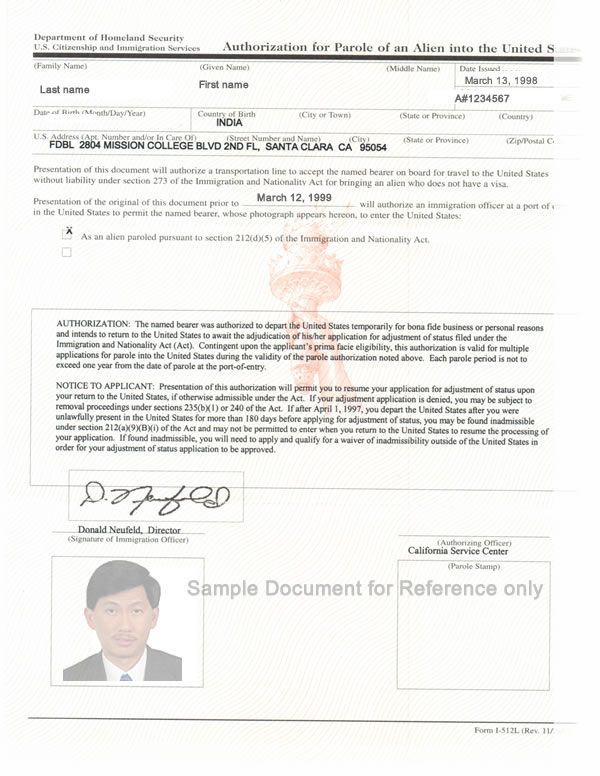
Upon receiving the document from USCIS, review it to confirm all of the information is correct. An advance parole document will also include the last day that it may be used to re-enter the U.S. Be sure that your travel is complete and that you return before this date.
Take the original AP document with you when you leave the United States. You’ll need to present it before getting on a plane, ship, bus, or train headed back to the U.S. and to the Customs and Border Protection officer when you arrive.
When traveling with advance parole as an adjustment of status applicant, remember to:
- Take your original Advance Parole Document
- Take a photocopy of the I-797C Notice of Action confirming that your I-485 application was accepted
- Return before the deadline on your Advance Parole Document – leave extra time in case of travel delays
Exceptions to Advance Parole Requirements
In certain situations, adjustment of status applicants are not required to obtain an advance parole document. If you hold a valid H-1, H-4, K-3, K-4, L-1, L-2, V-2, or V-3 visa or status, you may travel without advance parole approval provided that you maintain your status. For example, you don’t need advance parole if you are traveling for the same employer that sponsored your H or L visa. The H or L status must be valid, and you must have evidence that you filed an adjustment of status application. Carry the Form I-797C Notice of Action that confirms you have filed Form I-485.
However, obtaining advance parole may be a useful strategy even if it isn't "required." For example, an H-1B worker may also have a pending adjustment of status case. If an H-1B renewal is denied while the beneficiary is outside the U.S., they will not be able to re-enter with H-1B status to resume the green card application process. By applying for and receiving an advance parole travel document before departing, that person has a backup strategy to re-enter the U.S. and finish adjustment of status (regardless of H-1B status).
About CitizenPath
CitizenPath provides simple, affordable, step-by-step guidance through USCIS immigration applications. Individuals, attorneys and non-profits use the service on desktop or mobile device to prepare immigration forms accurately, avoiding costly delays. CitizenPath allows users to try the service for free and provides a 100% money-back guarantee that USCIS will approve the application or petition. We provide support for the Adjustment of Status Package (Form I-485) , Travel Document Package (Form I-131) , and several other immigration services .
Want more immigration tips and how-to information for your family?
Sign up for CitizenPath’s FREE immigration newsletter and
on our immigration services
Related Posts

Adjusting Status After Unauthorized Employment in the U.S.
You may be wondering if you can get a green card if you’ve worked in the United States without permission. Perhaps you learned that you… Continue Reading →

The 5 Biggest Immigration Mistakes Even Smart People Make
The U.S. immigration system, particularly U.S. Citizenship and Immigration Services (USCIS), has a reputation for quickly denying applications when there are mistakes. Sometimes simple immigration… Continue Reading →

Special Considerations for TN Professionals Who Adjust Status
TN visa status allows Canadian or Mexican professionals within a certain set of occupations to work in the United States. In fact, TN nonimmigrant may… Continue Reading →
Immigration Form Guides Form I-90 Form I-129F Form I-130 Form I-131 Form I-131A Form I-134 Form I-485 Form I-751 Form I-765 Form I-821D Form I-864 Form N-400 Form N-565 Form N-600
Sign Up to Receive Free Monthly Information for Your Immigration Journey
© Copyright 2013-2024, CitizenPath, LLC. All rights reserved. CitizenPath is a private company that provides self-directed immigration services at your direction. We are not affiliated with USCIS or any government agency. The information provided in this site is not legal advice, but general information on issues commonly encountered in immigration. CitizenPath is not a law firm and is not a substitute for an attorney or law firm. Your access to and use of this site is subject to additional Terms of Use .

What To Do if You Are Denied Entry Into the United States With Advance Parole
For green card applicants based in the United States and people with Deferred Action for Childhood Arrivals (DACA) status, Advance Parole is a welcome provision. With this travel document, you can leave the United States while in DACA status or while U.S. Citizenship and Immigration Services (USCIS) processes your green card application. Advance Parole provides a chance to visit ailing family, study abroad, attend forums and conferences abroad, and catch up with friends. But sometimes the U.S. government does not allow people with valid Advance Parole documents to reenter the United States. This article explains some reasons why the U.S. government would refuse to let you back into the country even with Advance Parole and some things you can do if you find yourself in this situation as an adjustment of status applicant or a DACA recipient.

Written by Jonathan Petts . Updated November 1, 2022
Why Was I Denied Entry Into the U.S. With Advance Parole?
U.S. Citizenship and Immigration Services (USCIS) can deny your entry into the United States with Advance Parole for multiple reasons. The Advance Parole application, known as Form I-131 , Application for Travel Document, does not guarantee your reentry. After you pay the filing fee and USCIS approves your application, your document will act as a reentry permit that gives you a pass to travel to a U.S. port of entry. You’ll need to get the physical document before you take your trip abroad. Be sure to check the processing times at your local USCIS office to make sure you can get approval before your travel date.
On your return, officers from U.S. Customs and Border Protection (CBP), a branch of the U.S. Department of Homeland Security (DHS), will decide if you can enter the country at the port of entry. Border patrol officers or CBP officers exercise discretion over whether you can return to the United States. Even if you have all the correct documentation, officers could still turn you away.
You could be denied reentry if USCIS denied your adjustment of status application while you were abroad on Advance Parole. Without a pending application, you lose your Advance Parole travel status since there is no longer a basis for your reentry. USCIS may have denied your application because you did not complete all the application steps while abroad. For example, you may have missed USCIS correspondence at your foreign address and did not act on their request for an interview or appointment .
What Can I Do if I Was Denied Entry Into the U.S. With Advance Parole?
If USCIS denies your entry into the United States with Advance Parole, you still have options to pursue. The options available to you depend on whether you got Advance Parole based on your immigrant visa application or on your DACA status.
Adjustment of Status Applicant With Advance Parole
If your Advance Parole ended because U.S. Citizenship and Immigration Services (USCIS) denied your adjustment of status application, you could apply for a new visa. You could get a tourist visa if you’re just visiting or you could even re-apply for a green card. You can re-apply for the green card as long as the reason USCIS denied your application is not because you don’t qualify for a green card .
For example, USCIS may have rejected your application because you didn’t provide enough supporting evidence or did not respond to requests for additional evidence they sent you. In that case, under immigration law, it is possible to apply again for the same immigration status. You may do so from your home country through your local U.S. embassy or by adjustment of status if you qualify.
DACA Recipient With Advance Parole
If you are a DACA recipient who gets stuck abroad, you may not be able to reenter the United States for some time. This is because you would have spent some time in the United States without lawful immigration status before getting DACA. This is called unlawful presence. For example, overstaying your visa as someone in nonimmigrant status would result in unlawful presence. There are consequences for this, depending on the length of your unlawful presence. You can face a three-year or 10-year bar from reentering the United States. USCIS can even permanently ban you from returning.
As a DACA recipient with Advance Parole, you will likely have to wait out your reentry bar if border patrol officials don’t allow you to enter the United States. You’ll be able to apply for a tourist visa to enter the country after you’ve waited out your reentry bar.
Talk to a Lawyer
Ultimately, the best thing you can do in any case is to talk to an immigration lawyer, especially one with experience with deportation cases and removal proceedings. If you face a reentry bar, they could help you file a waiver of inadmissibility for your unlawful presence. A waiver of inadmissibility is a pardon from the U.S. government for your unlawful presence. To file the waiver, you may have to justify your presence by providing humanitarian reasons or explaining how you provide a significant public benefit or other immigration benefit.
For example, you may have to prove a family member who is a U.S. citizen or lawful permanent resident will face extreme hardship and become dependent on the government if you have to wait out your reentry bar. If the U.S. government approves your waiver application, you can apply for a U.S. visa to enter the country once more.
Continue reading and learning!
What is Advance Parole

- Post author: Lluis Law
- Post published: June 28, 2023
- Post category: Immigration
Have you ever wondered what a parole is in immigration terms? In this blog we will see the complete process in 2024 to obtain it. We will also talk about the advance parole and other types, answering many frequent questions on the subject.
In addition to the extensive information in the article, the immigration lawyers at Lluis Law can help you. We have over 40 years of combined experience helping immigrants.
LATINOS WITH OVER 50 YEARS EXPERIENCE
Tell Us Your Case
Table of Contents
What Is An Immigration Parole?
Let’s see what the parole is in terms of immigration since the parole is a temporary stay permit in the US granted for reasons of significant public benefit or humanitarian reasons.
- This permit allows a person who would otherwise be ineligible or inadmissible to enter the US to travel and remain in the US temporarily.
- The INA allows the National Secretary to use this permit for any alien who must be admitted to the US for humanitarian reasons or significant public benefit.
- The person who obtains this parole is not someone formally admitted to the US in the eyes of immigration law.
- Parole is not intended to be used solely to avoid visa processing, waivers of inadmissibility, or regular processing. Nor is it intended to replace established pathways for refugee processing.
For How much time is the Parole Granted?
Normally the temporary stay permit is granted for a period not exceeding one year.
USCIS will specify the period necessary for you to fulfill the purpose of the parole as indicated in Part 3 of Form I-131 .
The parole can end in two moments. Completion will depend on which event, among the following two, occurs first.
- Date on which the term of the permit expires.
- The beneficiary leaves the US

Can I Work With The Temporary Stay Permit?
If you meet the requirements and do not violate the conditions of the parole, USCIS may, at its discretion, grant you a temporary work permit. To do this, you must request it using Form I-765 , Application for Employment Authorization.
Who Can Apply For Parole?
The temporary residence permit can be requested by any person for themselves or on behalf of another person. To do this, you will use Form I-131.
This petitioner can be an individual or entity and does not have to be a US resident or related to the beneficiary. He will file the I-131 petition on behalf of a person who is outside the US or for himself.
Do You Need A Sponsor To Get The Parole?
Yes, USCIS requires evidence of a sponsor providing financial support while in the US.
Note : This is an important factor that USCIS considers when granting temporary stay permission. Failure to provide it greatly increases your chances of being rejected for parole.
Sponsor Requirements
- The sponsor may or may not be the same entity or person as the petitioner.
- You must file a Form I-134 , Affidavit of Support, for each parole petition. With this, you must demonstrate that you have the financial resources to support the beneficiary of the parole while the beneficiary remains in the US.
There is no requirement related to the immigration status of the sponsor. However, if the sponsor is a lawful permanent resident or a citizen, it will be easier to demonstrate financial capacity. It is a relevant factor that will greatly help the beneficiary to obtain parole.
Therefore, it is highly recommended that the petitioner, together with the parole request, include evidence of the permanent residence or citizenship of the sponsor. Among others, it may include the following evidence:
- Permanent resident card.
- Naturalization certificate.
- Sponsor’s passport.
- Birth certificate.
Note : Form I-134 details the type of evidence that is required to demonstrate sufficient economic resources and income. These may include:
- Last tax return.
- Letter from the employer to the sponsor.
- Salary stubs.
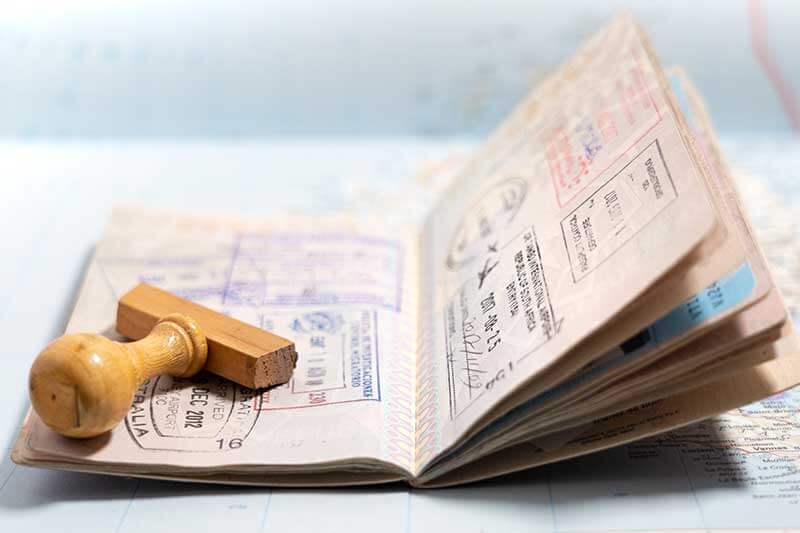
Did they not stamp your passport when you entered the United States ? Find out the reason for this in our recent post.
Having Multiple Sponsors
The petitioner must take into account the Poverty Guidelines of the Department of Health and Human Services , to cover the income and support requirements.
In case one sponsor is not enough, more than one can be identified. It will be done through Form I-134 together with the documents required for each sponsor.
Have An Organization As A Sponsor
Both non-profit organizations and medical institutions can sometimes act as sponsors of the parole.
In the event that the employee of the organization cannot complete Form I-134, a letter of commitment of economic sponsorship from the organization will be included. This will be submitted together with the application for a temporary stay permit (parole).
Be A Self Sponsor
The beneficiary can prove to be financially self-sufficient. You will do this by submitting Form I-134 and supporting financial documentation.
Parole Eligibility
USCIS reviews each case individually looking specifically at the evidence presented by the petitioner. To authorize this permit you must complete the following:
- There are urgent humanitarian or significant public benefit reasons for the beneficiary to be in the US.
- The beneficiary deserves to obtain an exercise of discretion in his favor.
Urgent Humanitarian Causes
Although this term is not regulated nor is there a statutory definition, USCIS considers the circumstances in their entirety. To do this, consider the following factors, among others:
- If the exposed circumstances are or not compelling;
- The effect of such circumstances on the well-being of the person;
- The level of suffering that could be caused by not being authorized for parole (temporary residence permit).
To demonstrate urgency, please review the USCIS guide with the most common types of petitions. Among these, you can request critical medical treatment or visit a terminal relative.
Causes Of Significant Public Benefit
This includes but is not limited to reasons of national security and public order or reasons of national or foreign policy. There is no definition of the term and USCIS will review all circumstances.
Although obviously there is a beneficiary who receives the parole, there really are cases in which it is understood that the benefit is for the general interest.
Both Causes
There are cases in which you can apply for both reasons. An example would be a person who requires an experimental medical treatment that involves future benefit to many other people in the US.
How Does USCIS Determine Who Gets Parole?
You should be clear that USCIS exercises its discretion on a case-by-case basis. That is, they evaluate the positive factors against the negative ones, from the criminal record to humanitarian reasons or significant public benefit.
These are some of the factors that USCIS considers to grant the temporary stay permit:
- That the purpose of the parole can be achieved within a specified period of time.
- Evidence of any matter of national security.
- Evidences of previous fraudulent practices.
- Evidence of criminal history or previous violations of immigration law.
- Intention of the beneficiary to leave the US when his permit expires or if he has the resources to obtain legal immigration status during the parole or in another period that the permit is reissued.
- Consideration of whether the beneficiary’s presence would benefit a lawful permanent resident, US citizen, or US community.
- Solvency and sufficient financial assistance while in the US.
- Evidence of good moral character.
- Consider whether there is another means in addition to parole for the beneficiary to travel to and remain in the US for the stated purpose. For example, the ability or inability to obtain a visa.
Note : USCIS does not consider a single factor but rather the sum of all circumstances. In addition, you can revoke the permit at any time if you consider that the parole no longer has a justified cause or the beneficiary breached the conditions.
The Parole Process
You already know what a parole is and now we will show you the process in summarized steps to obtain the temporary residence permit:

1. Submit The Petition For Parole
The petitioner submits the following documentation to the USCIS Postal Collection Drop Box in Dallas:
- Form I-131.
- Form I-134.
- Supporting documentation.
- Payment of filing fee (or Form I-912 , Application for Fee Waiver).
The postal collection drop box forwards the parole request to the USCIS Division of International Operations (USCIS-IO) in Washington, DC
Note : This point of the process is detailed at the end of the 7 steps.
2. USCIS Evaluates The Petition To Determine The Urgency (Triage)
Initially, the case is reviewed by USCIS to determine if there is urgency, regardless of whether the applicant has expressed such urgency. They will also check if they have jurisdiction over it.
This usually occurs 2 weeks after filing the parole request and 2 days after USCIS-IO receives the petition.
3. A USCIS Official Reviews The Application
This process includes:
- Review the application along with supporting documents;
- Conduct security checks and investigations;
- Issue a Request for Evidence (RFE) or Notice of Intent to Deny if necessary;
- Document the reasons for the decision;
- Prepare notice of decision.
4. A Supervisor Reviews The Decision
Before they are final decisions, a supervisor reviews all parole requests.
5. USCIS Notifies The Decision
Application Approved : If USCIS approves the application, an approval letter will be mailed to the beneficiary, petitioner, and any authorized representative. It will also notify the beneficiary’s closest US embassy or consulate.
The letter includes the steps to follow to obtain the temporary stay permit.
Denied Application : In this case, USCIS also mails the denial letter to the beneficiary, petitioner, and any authorized representative.
6. Issuance Of Parole And Travel Documents For Approved Cases.
The approval notification will inform the beneficiary of the following:
- You must complete Form DS-160 .
- Go to an appointment with the consular section of the Department of State. This is done to verify your identity and the collection of biometric data for additional security checks.
All recipients 14 years of age or older must provide their biometric data. If everything is correct, the US consulate will issue a document called Boarding Stamp or Folio. This document allows the beneficiary to travel to the US within 30 days of being issued.
Note : This Boarding Folio does not guarantee parole but it does allow access to final step 7.
7. CBP Authorizes The Temporary Stay Permit To The US. (Parole)
- A CBP officer will be in charge of inspecting the beneficiary at a port of entry.
- If the officer authorizes the parole, he will issue the beneficiary a Form I-94 , Arrival/Departure Record detailing the duration of the parole.
- The temporary stay permit period begins from the moment CBP authorizes parole at the port of entry.
How To Apply For Parole (Temporary Stay Permit)
- Complete Form I-131 and include the payment of the filing fee or Form I-192 (Fee Waiver) for each beneficiary.
- If there is more than one sponsor, each sponsor must submit a Form I-134.
- You must include detailed information and supporting documentation on the reasons for requesting parole for the beneficiary. In the following section “submitting evidence”, we detail this point.
- If you are represented by a lawyer or other authorized representative, you must submit the completed Form G-28 for USCIS to contact them.
Submitting Evidence
Through the application and supporting evidence, the petitioner must demonstrate that the beneficiary qualifies for parole and requires favorable discretion.
It is important that the petitioner provide all required documentation to avoid delays. Similarly, a USCIS officer may issue an RFE to obtain additional information.
In addition to the I-131, I-134, and fee payments or waiver thereof, you must submit the following information:
- Reasons for requesting parole.
- Amount of parole time needed by each beneficiary.
- Time and place where the beneficiary tried to obtain the visa, if applicable;
- If the visa was denied, include a copy of the denial letter and;
- If applicable, a detailed explanation of why the beneficiary cannot obtain a required waiver of inadmissibility and a copy of any denial letter received.
- Copies of any previously filed immigrant petitions (Forms I-140, I-130, I-360, etc.) or if available, nonimmigrant visa petitions filed by or for the beneficiary.
- In case you provide a birth certificate, be sure to send a copy of both sides of the certificate.
- If applicable, copies of a US passport, birth certificate, permanent resident card, and other evidence of the sponsor’s and petitioner’s valid US citizenship or immigration status.
Note : The USCIS guide linked above has additional information on other types of evidence for more specific cases.
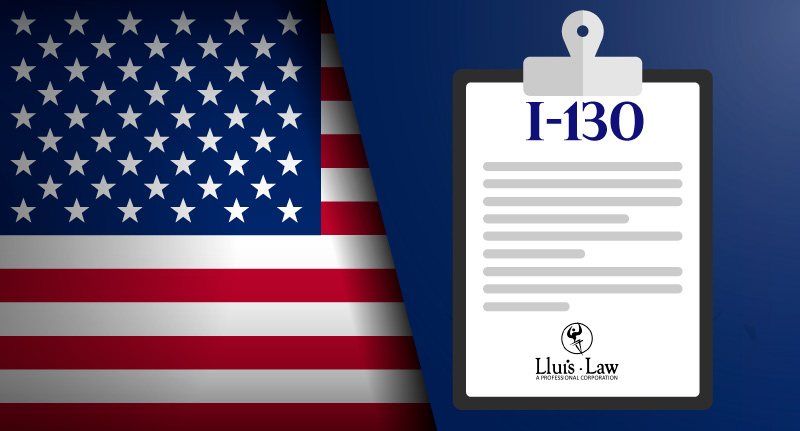
In our blog we explain how to fill out the I-130 form , in case you don’t know how to do it exactly.
Where To Send The Parole Request?
USCIS Dallas Postal Collections Box:
United States Postal Service (USPS) deliveries:
P.O.Box 660865
Dallas, TX 75266
FedEx, UPS and DHL deliveries:
2501 S. State Hwy. 121 Business
Lewisville, TX 75067
In the forms address book you have different addresses where to send many of the forms mentioned.
Request Parole For Minors
Let’s see what process must be followed for the parole of minors. To request the temporary stay permit for minors under 18 years of age, USCIS may require the following types of evidence:
How Long Does The Parole Process Last?
USCIS always tries to complete the process within 3 months. This however is highly variable depending on the complexity of the case and the initial supporting documentation.
On the request processing times page you can get the current processing times.
The important thing is to present all the initial supporting documentation and respond to requests about it to avoid delays.
Our lawyers can help you to know what the parole is and in this whole process to avoid delays.
Expedited Processing
To request expedited processing you must:
- Follow the criteria established in the instructions for Form I-131.
- Write the word “EXPEDITE” in black ink in the upper right corner of the application.
- Provide an E-mail, telephone number and fax number for the petitioner or representative with any expedited request.
- Normally requesting expedited processing is due to an urgent reason for which the applicant must demonstrate it. Examples of this would be life or death situations or any other situation of extreme urgency.
What To Do If My Temporary Stay Permit Is Denied?
You cannot appeal a denial of parole as it does not confer any substantive rights or immigration status.
In this case, you may submit a new Form I-131 packet with the fee or fee waiver request.
Note : There is no limit to the number of I-131 forms that one person can file.
Trips For The Parolees (Those Who Get The Parole)
The parole document issued to a person outside the US is valid for a single application for parole at the port of entry. If the petitioner leaves the US, her permission is cancelled.
If you want to travel abroad and return, you need an advance entry permit before traveling, known as an advanced parole.
Alternatively you can apply for a new parole from abroad or a valid return visa.
Request A Reissue Of A New Parole (Re-Parole)
In some cases a beneficiary may remain in the US beyond the authorized parole period. In these cases, they can reapply for the temporary stay permit from the US. The petitioner will do so in the following way:
- Filing a new Form I-131;
- By checking the box 1.e or 1.f in part 2 of the form and;
- By writing “re-parole” at the top of the application.
You must also include the required fees or fee waiver request along with evidence and materials to support the new parole request. This includes the explanation of the need for an additional parole period.
You must apply at least 90 days before the parole expires. This grants sufficient processing time and avoids accumulating time in illegal status.

Parole For Cubans
The Cuban Family Reunification Parole Program (CFRP) was created in 2007 and allows US citizens and Green Card holders (legal permanent residents) to request parole or permission to bring their Cuban family members.
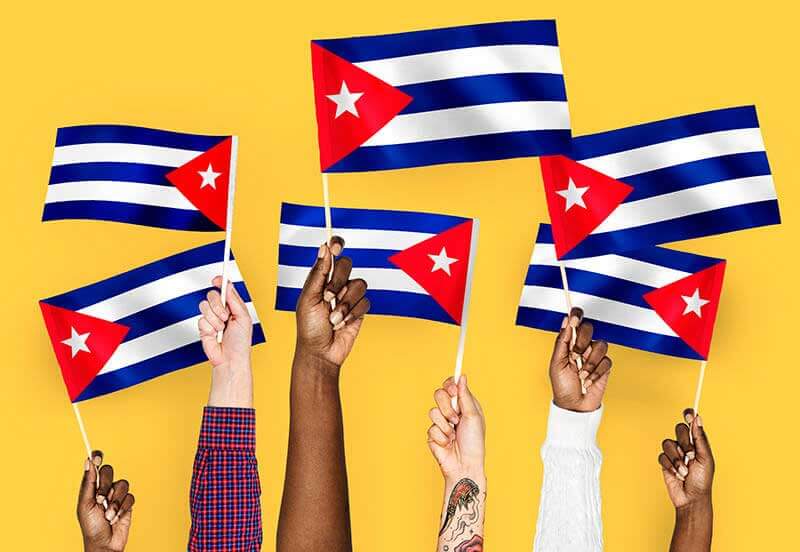
What Is The Cuban Family Parole (CP3)
Within the Cuban Parole Program, it is contemplated that Cuban citizens over 21 years of age who hold a visa or who have been issued a parole (CP1), can request a family immigration parole. This program benefits certain family members.
On the other hand, the Special Program for Cuban Emigration, known as “el bombo”, is currently suspended.
Parole For Cuban Doctors In 2024
The program (Cuban Medical Professional Parole Program, CMPP) was repealed by the United States on January 12, 2017. However, applications made before that date continued to be processed and adjudicated by USCIS. Also in cases where a CMPP principal applicant, prior to that date, applied for permission to enter the US for their spouse and unmarried children under the age of 21, who will travel with them.
Similarly, Cuban medical professionals who were accepted into the CMPP Program, before or after January 12, 2017, could submit petitions for relatives to join them before August 24, 2017.
Initially, the program was created to help Cuban doctors and their families, who were sent by the Cuban government to work in other countries. The application for an entry permit to the US was presented at an American embassy or consulate.
Several US senators have petitioned the federal government to reinstate the program again. The sending of Cuban doctors and paramedics to work for the Cuban socialist government in other countries has been strongly questioned. Some Latin American governments and organizations have classified the Cuban program as a form of neo-slavery.

Did you know that you may be eligible to qualify under the Cuban Adjustment Act ? Learn more about this topic in our article.
What Is An Advance Parole?
The advance parole is an advance permission to enter. This document allows certain aliens to re-enter the US after traveling abroad without an immigrant or nonimmigrant visa.
It also allows foreigners who have applied for adjustment of status or some other benefit to keep the application while out of the country.
The Importance Of Having The Advance Parole Permit Before Traveling
Foreigners must have an advance parole permit before leaving the US As a general rule, if you did not obtain this permit before traveling, you will not be able to re-enter upon your return. Unless you have a valid visa.
The government may consider the alien to have abandoned their pending application for immigration benefits. When this occurs, the person would have to start the immigration process over again. To do this, you must resort to consular processing in your own country.
Have you ever wondered if you can change of status from a visitor visa to a Green Card ? In our blog we explain it in detail.
Who May Need Advance Parole?
This permit can be applied for by national foreigners in the US who wish to travel abroad but find themselves in the following situations:
- Admitted as refugees or have received asylum.
- Pending application for asylum in the United States .
- Pending adjustment of status application.
- They have received benefits under the family unity program.
- Obtained Temporary Protected Status (TPS) .
- They received a humanitarian parole or a T/U visa.
You can learn the T visa requirements and what is U visa in detail on our blog.
Who Is Not Eligible For Advance Parole?
Some aliens residing in the United States are not eligible to obtain this travel permit. This includes:
- National foreigners without valid immigration status.
- National foreigners with exchange visas, subject to the foreign residence requirement.
- Beneficiaries of a private bill.
- Holders of a valid re-entry permit unless returned to USCIS or shown to have been lost.
- Aliens in deportation proceedings, even if they are within the categories of TPS, T Visa or U Visa, asylum and so on with the exception of DACA beneficiaries .
For this last point, you can review our section dedicated to “ Immigration lawyers specialized in deportations ”.
Benefits Of Advance Parole
There are 2 main benefits:
- Allows the alien to return to the US after leaving the country without the need to obtain a visa.
- Keep the adjustment of status application pending with USCIS.
Before applying for advance parole, it is advisable to speak with an experienced immigration attorney. This will guide you on his eligibility.
Our attorneys have more than 40 years of combined experience with successful results in all areas of immigration. This includes helping immigrants understand how to become a US citizen even if they don’t know how to speak English .
Frequently Asked Questions About Advance Parole
Below we answer some of the frequently asked questions on the subject, including the definition of some terms in English.
What Is An I-512 Advance Parole?
It is the document issued by USCIS when it approves the travel permit. It can have two forms:
- The document properly known as I-512 or;
- The work permit card that the immigrant receives and also serves as advance parole. In fact, the document includes the phrase: “serves as I-512 advance parole”.
Who Can Travel Abroad And Return Without Having To Previously Obtain El Advance Parole?
The exceptions to travel outside the US and return without the need to present a travel document are for people who have the following types of visas:
- H-1B temporary workers , H-4 spouse, or the children of an H-1B.
- K-3 spouse or child (K-4) of a US citizen.
- L-1 workers who are transferred to US offices by the company, their spouse (L-2), or the child of the L-1 worker.
- Spouse (V-1) or children (V-2 / V-3) of a lawful permanent resident.
Upon returning to the US, holders of these visas must submit their respective nonimmigrant visas and have no limitations to remain admissible in the country.
As long as these people have an adjustment request pending, they will not be considered to have abandoned it. Even in cases where they did not apply for the advanced parole document before leaving the US.
We advise you to speak with our lawyers and have proof of the application for the adjustment of status application. In this case, Form I-797, which certifies receipt of the application, is useful.
Check our section for the types of American visas that interest you. There you will find a complete index with the main visas.
If I Am Or Have Been In The US Illegally, Can I Get Advance Parole?
Yes, you can. The problem is that a national foreigner who leaves the United States after being in the country illegally could be barred from re-entering. This includes cases in which the foreigner obtained the advance parole immigration document.
- When accumulating more than 180 days of unlawful presence, but less than one year, the law establishes a three-year restriction on reentry to the United States.
- If the illegal presence extends for more than one year, the re-entry ban can be for more than 10 years.
Before leaving the United States, aliens with a history of unlawful presence should consult an experienced attorney. The professional will be able to guide them about their situation to prevent them from making mistakes.

If, in addition to knowing what parole is, you are looking for a way to go live in the United States legally , then on our blog you will find an article focused on detailing this process.
If I Am Outside The United States, Can I Also Get Advance Parole?
Aliens who are already outside the US are generally not eligible for advance parole. However, for urgent humanitarian reasons or because of an important public benefit, a foreign national may be able to obtain advance parole.
Applicants for advance parole cannot use it to avoid delays or circumvent normal visa issuance procedures.
To process the advance parole, the foreigner outside the United States must submit their biometric data if they are between 14 and 79 years old. He must do so in the place where USCIS or the Department of State tells him to.
Does Advance Parole Guarantee That I Can Return To The US?
Definitely not. Even when the national foreigners obtain immigration parole, they are still subject to inspection by the Customs and Border Protection Service (CBP). This can occur at any US port of entry for the purpose of determining your admissibility into the country.
Aliens deemed inadmissible may be denied entry into the country. Also open an expedited removal process or be subject to a removal process before an immigration court.
How Long Does It Take To Process The Advance Parole?
Obtaining the advance parole document can take about 90 days. However, said granting could be expedited if you meet the requirements demanded by the United States Citizenship and Immigration Services (USCIS):
- An emergency.
- Serious financial loss to the company/individual.
- Humanitarian reasons.
- When it is a non-profit organization and travels abroad for cultural or social activities of interest to the United States.
- At the express request of the Department of Defense or any other agency for a matter of national interest.
- By USCIS error.
In this case, the processing of the expedited request may take up to 30 days. However, when it is an emergency request and depending on the case, the issuance of the document could be done the same day at the USCIS office.
How Long Can I Stay Outside Of The United States?
The validity of the immigration advance parole travel permit document to stay outside the country that is granted to foreigners, is generally 1 year, counted from the date of issue.
This does not mean that the Department of Homeland Security cannot, at any time, revoke or rescind the advance parole document. Regardless of whether the beneficiary is inside or outside the United States.
What Does “Serves As I-512 Advance Parole” Mean?
The phrase translates as an immigration document and refers to Form I-512, which is the actual permit granted by the US government to the immigrant.
What Is An Advance Parole Document?
It is the travel document (I-512 Advance parole) that authorizes the foreigner to re-enter the United States.
Now you know what an immigration parole is. We understand that it is a complex subject and doubts may come to your mind. For more information about the advance parole or any case related to immigration matters, call us.
The immigration lawyers at Lluis Law are at your disposal.
You Might Also Like

How to get a Green Card

Illegal reentry after deportation

How to fill out form I-130
- Job Vacancies
- Scholarship
- Canada Visa
- Australia Visa
- Poland Visas
- Work Permit
- Travel Insurance
- Visa Sponsored Jobs
- Career Advice
- Entertainment
- Health Tips
- Latest Music & Videos
- Relationship
- Sports News
- True Life Stories

Me (Canadian) and my boyfriend (American) have been researching for months and have decided that a K-1 Visa for me to go there is the right way to go.
However I notice that with a K-1 Visa, advance parole is required in order to travel back and forth between Canada and the USA. This concerns me a bit... I have a project/job that will remain here in Canada which will require me to be able to come back often (maybe every month or two), and now I'm concerned that I won't be able to. Visas other than a K-1 allow multiple entry...
So correct me if I am wrong in this train of thinking:
We apply for the K-1 and hopefully are approved. Once that Visa is obtained, I am free to go to the United States and stay there for 90 days before getting married. Until we are married, I am not allowed to leave the States and re-enter? What about if I arrive in the States on the K-1, and say, we get married the next day? Then we have to apply for another change of status... and I cannot leave the country with hope of re-entering until it is approved? Is this correct?
Link to comment
Share on other sites.

raymaga 25
I am Canadian and married a US citizen, so I will try to help you understand the process a little.
You will enter the US with your K-1 Visa, marry anytime within 90 days of your entry, and then apply for Adjustment of Status (to Conditional Permanent Resident).
At the same time that you submit your AOS application, you can submit your AP (Advance Parole) application. You cannot leave the US until either your AP or your AOS is approved. AP is almost always approved a lot quicker than AOS .
AP usually takes anywhere from 6 weeks to 3 months to approve. In that time, you would not be able to return to Canada.
To speed up the AOS process, ask the person who marries you to give you the signed marriage certificate. You can then take that marriage certificate to the court house and get the certified copies done while you wait. If the person who marries you sends the marriage certificate in themselves, it takes weeks to receive the certified marriage certificate in the mail.
So, you can have all the necessary AOS documents prepared in advance of your wedding, and then right after your marriage, you can go to the court house, get your marriage certificate, attach it to your AOS application and mail it. We mailed our package off 2 days after our wedding. It saved a few weeks of processing time.
PM me if you have any other questions.
P.S. I should tell you that, even though I am NOT endorsing this, both me (K-1) and my daugher (K-2) WERE able to cross the border (by car at Blaine, WA) once we obtained our visas, but we did NOT activate them until we wanted to. I'm not sure if everyone would be able to do this, but we both did, more than once. They told me at the border that until you get married, you can leave the U.S. and return. I entered the US on July 31, 2004, activated my K-1 Visa that day, returned to Canada to attend my brother's wedding on August 21, 2004, returned to the US after my brother's wedding, and got married August 28, 2004. But, this is only my experience, and like I said, do NOT try this without first asking if this is indeed possible.
"THE SHORT STORY"
KURT & RAYMA (K-1 Visa)
Oct. 9/03... I-129F sent to NSC
June 10/04... K-1 Interview - APPROVED!!!!
July 31/04... Entered U.S.
Aug. 28/04... WEDDING DAY!!!!
Aug. 30/04... I-485, I-765 & I-131 sent to Seattle
Dec. 10/04... AOS Interview - APPROVED!!!!! (Passport stamped)
Sept. 9/06... I-751 sent to NSC
May 15/07... 10-Yr. PR Card arrives in the mail
Sept. 13/07... N-400 sent to NSC
Aug. 21/08... Interview - PASSED!!!!
Sept. 2/08... Oath Ceremony
Sept. 5/08... Sent in Voter Registration Card
Sept. 9/08... SSA office to change status to "U.S. citizen"
Oct. 8/08... Applied in person for U.S. Passport
Oct. 22/08... U.S. Passport received
DONE!!! DONE!!! DONE!!! DONE!!!
KAELY (K-2 Visa)
Apr. 6/05... DS-230, Part I faxed to Vancouver Consulate
May 26/05... K-2 Interview - APPROVED!!!!
Sept. 5/05... Entered U.S.
Sept. 7/05... I-485 & I-131 sent to CLB
Feb. 22/06... AOS Interview - APPROVED!!!!! (Passport NOT stamped)
Dec. 4/07... I-751 sent to NSC
May 23/08... 10-Yr. PR Card arrives in the mail
Mar. 22/11.... N-400 sent to AZ
June 27/11..... Interview - PASSED!!!
July 12/11..... Oath Ceremony
We're NOT lawyers.... just your average folks who had to find their own way!!!!! Anything we post here is simply our own opinions/suggestions/experiences and should not be taken as LAW!!!!

Turboguy 6
Crossing the boarder is getting a lot tougher. Actully I believe you can leave the USA, you just could not return. The most viable solution might be to marry as quickly as possible, Apply for the AOS and the A/P as soon as possible, when you really have to go to Canada go and stay there until the A/P is approved and your mate can send you the A/P by DHL or the like. That is the only suggestion I have.
12/14/2006 Applied for K-1 with request for Waver for Multiple filings within 2 years. Waiting - Waiting - Waiting 3/6 Called NVC file sent to Washington for "Administrative Review" Told to call back every few weeks. 7/6 Called NVC, A/R is finished, case on way to Moscow. YAHOO!!!!!!!!!!!!!!!!!!!!!!!!!!!!!!!! 7/13 On Friday the 13th we see updated Moscow website with our interview on 9/11 (Hope we are not supersticious) 9/11 Visa Approved. Yahoo. 10/12 Tickets for her to America. I am flying to JFK to meet her there. 12/15/07 We are married. One year and a day after filling original K-1 12/27 Filed for AOS, EAD & AP 1/3 Received all three NOA-1's 1/22 Biometrics 2/27 EAD & AP received 4/12 Interview 5/19/08 RFE for physical that she should not have needed. 5/28 New physical ($ 250.00 wasted) 6/23 Green Card received 4/22/10 Filed for Removal of Contitions. 6/25 10 Year Green Card received Nov, 2014 Citizenship ceremony. Our journey is complete.

KarenCee 3
You're right, it's getting tougher and it's better to have the document in hand when you leave the US. That way you wouldn't have to wait for someone to send it to you. AP, I think, isn't meant to be used in the way the OP is asking about. Again, I'm not totally sure which is why I suggested he and his fiancée talk to an immigration attorney.
Teaching is the essential profession...the one that makes ALL other professions possible - David Haselkorn
Create an account or sign in to comment
You need to be a member in order to leave a comment
Create an account
Sign up for a new account in our community. It's easy!
Already have an account? Sign in here.
- Existing user? Sign In
- Immigration Guides
- Immigration Wiki
- Example Immigration Forms
- Form Downloads
- K1 Fiancé Visa
- CR1 & IR1 Spousal Visa
- US Visa FAQs
Office Reviews & Info
- Consulate & USCIS Office Reviews
- US Port of Entry Reviews
- US Consulate Information
- Processing Times
- Immigration Timelines
- VJ Partners
- Ask a Lawyer
- All Activity
- Popular Topics
- Create New...

An official website of the United States government
Here’s how you know

Official websites use .gov A .gov website belongs to an official government organization in the United States.
Secure .gov websites use HTTPS A lock ( Lock A locked padlock ) or https:// means you’ve safely connected to the .gov website. Share sensitive information only on official, secure websites.

- National Media Release
- CBP Reminds Summer Travelers to Stay ‘Travel Ready'
CBP Reminds Summer Travelers to Stay ‘Travel Ready'
WASHINGTON — As summer approaches and families prepare for their international trips, U.S. Customs and Border Protection (CBP) reminds the traveling public to use the agency’s official mobile applications to secure and streamline their travel and expedite their reentry into the United States.
Throughout 2023, CBP expanded use of its technology, processing over 394 million travelers at ports of entry in fiscal year 2023, a 24-percent increase over last year, and has already reached almost 100 million travelers in the first quarter of FY2024, totaling more than 527 million travelers to date using biometric facial comparison technology at entry, exit and Preclearance locations, with a match rate of more than 98 percent.
Additionally, memberships in CBP’s Trusted Traveler Programs in FY2024 has reached 14 million. For those looking to complete an interview before their summer travel, CBP currently has more than 158,000 interview appointments available within the next 90 days. Enrollment on Arrival (EoA) remains the best option to complete a GE interview. Applicants can complete their interview without an appointment and with just the entry documents they would normally carry when arriving from international locations.
CBP has also introduced a complement of mobile applications with technological enhancements to help speed up the travel process when entering the U.S. via air, land, or sea. Global Entry, for example, launched a new mobile app in September 2023 that allows members to complete their entry processing on their phones before even leaving the plane. The app can be downloaded from the Apple App store and Google Play, and is currently available for use at 47 airports, with more locations coming soon. To date around 348,000 Global Entry users have processed their arrival using the app.
International travelers who are not Global Entry members can take advantage of the Mobile Passport Control app, which allows travelers to submit their passport and travel information in advance with a mobile device, resulting in less congestion and more efficient processing. MPC is available at 51 ports of entry, including 14 Preclearance locations and four seaports. It can be used by all U.S. citizens, U.S. Lawful Permanent Residents, B1/B2 Canadian Citizens, and returning Visa Waiver Program travelers. The app was used by 4.1 million travelers in FY2023, and has already had over 4.2 million uses in FY2024.
Non-U.S. citizens planning travel into the U.S. also have the option of using the Electronic System for Travel Authorization mobile app or the CBP One mobile app. The ESTA Mobile app was implemented June 1, 2023, and has been used almost 422,000 times to submit an ESTA application for authorization to travel to the U.S. In the first quarter of FY2024, the app has been used almost 338,000 times to apply. The CBP One™ app may also be used by visitors to the U.S. to apply and pay for the I-94 online. In FY2023, visitors used the CBP One app more than 458,000 times to complete a provisional I-94 application and almost 195,000 times in the first quarter of FY2024.
Additionally, U.S. citizens who are required to declare agriculture and biological products upon arrival into the United States may also use CBP One to provide advanced notification that they will need an agriculture inspection. Categories for declaration include:
- Biological materials that may require permits issued by the U.S. Department of Agriculture (USDA) and the Centers for Disease Control and Prevention (CDC)
- Pets, specifically birds and dogs, accompanying travelers in various capacities that carry the potential of introducing foreign animal diseases to the U.S. or other public health concerns
- Cleaning and disinfection of shoes
- Hunting trophies
All CBP applications can be downloaded free from the Google Play Store or Apple App Store . For more information about CBP’s suite of mobile apps, visit Mobile Apps Directory | U.S. Customs and Border Protection (cbp.gov)
For more information on preparing to travel abroad, visit the Know Before You Go page on the CBP website .
U.S. Customs and Border Protection (CBP) is America's frontline: the nation's largest law enforcement organization and the world's first unified border management agency. The 65,000+ men and women of CBP protect America on the ground, in the air, and on the seas. We facilitate safe, lawful travel and trade and ensure our country's economic prosperity. We enhance the nation's security through innovation, intelligence, collaboration, and trust.
Official websites use .gov A .gov website belongs to an official government organization in the United States.
Secure .gov websites use HTTPS A lock ( A locked padlock ) or https:// means you've safely connected to the .gov website. Share sensitive information only on official, secure websites.
- Create Account
Direct Filing Addresses for Form I-131, Application for Travel Document
Use the chart below to determine where you must file your Form I-131, Application for Travel Document , if you are not filing online via myUSCIS.gov.
If you do not submit your application to the appropriate direct filing address, it may take longer for us to process your case.
We generally send parole requests filed by individuals currently in removal proceedings or previously removed from the United States to U.S. Immigration and Customs Enforcement (ICE) for review.
Call the USCIS Contact Center at 800-375-5283 (TTY: 800-767-1833) for assistance.
E-Notification : If you want to receive an e-mail and/or a text message that we have accepted your form at a USCIS lockbox, complete Form G-1145, E-Notification of Application/Petition Acceptance and clip it to the first page of your form.
- My View My View
- Following Following
- Saved Saved
Explainer: What does Biden's new asylum ban at the US-Mexico border do?
- Medium Text

WHAT DOES THE BIDEN ASYLUM BAN DO?
Will these measures 'close' the border, how will this work in practice, will the ban be challenged in court, why is biden doing this now, how are republicans and democrats reacting, what's next.
Sign up here.
Reporting by Ted Hesson in Washington; Editing by Mary Milliken and Marguerita Choy and David Gregorio
Our Standards: The Thomson Reuters Trust Principles. New Tab , opens new tab

Thomson Reuters
Ted Hesson is an immigration reporter for Reuters, based in Washington, D.C. His work focuses on the policy and politics of immigration, asylum and border security. Prior to joining Reuters in 2019, Ted worked for the news outlet POLITICO, where he also covered immigration. His articles have appeared in POLITICO Magazine, The Atlantic and VICE News, among other publications. Ted holds a master's degree from the Columbia University Graduate School of Journalism and bachelor's degree from Boston College.

Mica Rosenberg leads the immigration team at Reuters, reporting her own projects while helping edit and coordinate cross-border coverage. An investigation she published with colleagues into child labor in the United States – exposing migrant children manufacturing car parts and working in chicken processing in Alabama – was a finalist for the Pulitzer Prize and won a George Polk award among other honors. She was a foreign correspondent reporting from nearly a dozen countries across Latin America and also covered legal affairs and white-collar crime in New York. She completed a Knight Bagehot Fellowship in business journalism and earned a master’s from Columbia’s School of International and Public Affairs. She is originally from New Mexico and is based in Brooklyn.

World Chevron

South Korea's young shamans revive ancient tradition with social media
With statues of the Buddha and local gods, candles and incense sticks, Lee Kyoung-hyun's shrine looks similar to those of Korean shamans from centuries past.
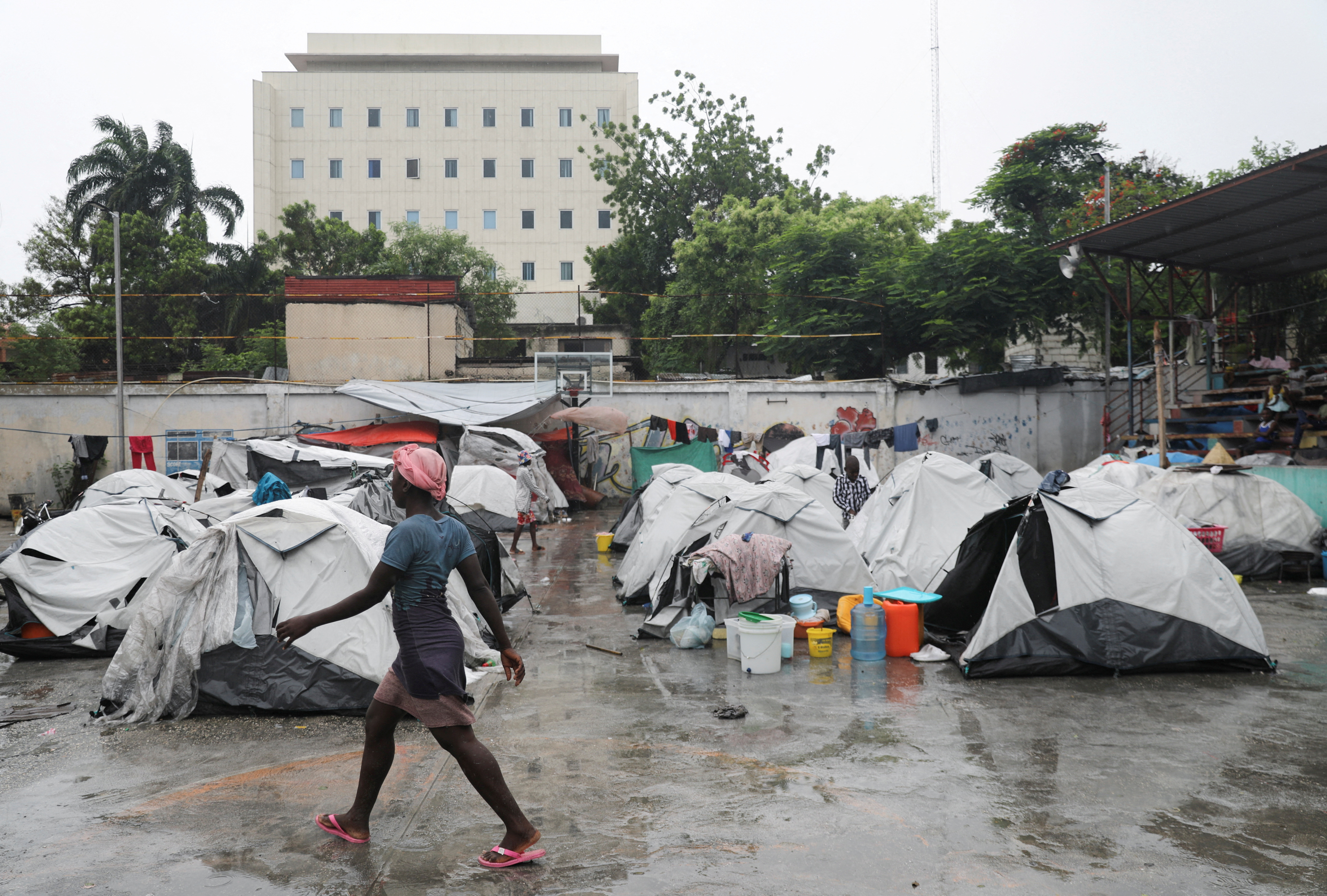

IMAGES
VIDEO
COMMENTS
Use this form to apply for a reentry permit, refugee travel document, TPS travel authorization document, advance parole document (including parole into the United States for urgent humanitarian reasons or significant public benefit), or advance permission to travel for Commonwealth of the Northern Mariana Islands (CNMI) long-term residents.
A valid and unexpired travel document, such as a reentry permit, refugee travel document, or advance parole document. You generally need to apply for and obtain a travel document before you leave the United States. You may request a travel document by filing Form I-131, Application for Travel Document.
Step 1: Complete Form I-131. Form I-131 is officially called the Application for Travel Document. This document is used for anyone applying for a Reentry Permit, a Refugee Travel Document, and Advance Parole. You cannot submit your travel permit request to the U.S. government without completing and signing this form.
Form I-131 is a form that you submit to USCIS to apply for a valid travel document including: Advance parole. A re-entry permit. A refugee travel document. You may need to submit this form if you ...
To apply for a passport, U.S. citizens can visit State Department website or call the U.S. Passport Office at 1-877-4USA-PPT or TDD/TYY: 1-888-874-7793. Foreign residents should contact their respective governments to obtain passports. Due to recent changes to U.S. immigration law, travel outside of the United States may have severe ...
This permission is granted through a travel document. Travel documents are also given to people who want to travel, but cannot get a passport from their country of nationality. See Advance Parole, Reentry Permit, and Refugee Travel for more information.
The advance parole travel document permits you to travel back to the U.S. without applying for another visa, and without nullifying the application you have in progress. It is commonly used when someone has a pending application for permanent residence, adjustment of status or asylum.
To apply for Advance Parole, you will need to submit the following to U.S. Citizenship and Immigration Services (USCIS): Form I-131, issued by USCIS (see below). Copy of a photo identity document, such as a driver's license or passport identity page. Proof that you have been approved for DACA (Form I-797).
o USIS will only approve travel ("advance parole") for AA recipients who demonstrate that their need for travel is for "humanitarian, education, or employment" purposes.* Humanitarian: ... Skip sections 5 and 6 on reentry permits and refugee travel documents 3. Gather any supporting evidence to prove the need for travel
An Advance Parole Document is a form of temporary travel authorization. Nonimmigrants in the United States (such as adjustment of status applicants, TPS beneficiaries, refugees/asylum applicants, etc) must obtain Advance Parole to get permission to reenter the United States after traveling abroad without jeopardizing their status. Advance ...
An Advance Parole Document is a form of temporary travel authorization used to reenter the United States after traveling abroad. Certain non-U.S. citizens use advance parole in lieu of a visa when reentering the United States.…. Continue Reading →.
Step 5: Receive Your Advance Parole Travel Document. Once USCIS approves your request for Advance Parole, they will mail your travel permit to your mailing address within 2-3 weeks. For this reason, it's important to make sure you double-check that you have the correct mailing address on your Form I-131. The whole process takes about six ...
Normally, the Form I-131 fee for an advance parole travel document is $575. Specifically, there is no USCIS fee for advance parole if you filed a Form I-485 (adjustment of status application) on/after July 30, 2007, with a fee, and that I-485 application is still pending. However, USCIS has announced a new fee structure that will change the ...
The Advance Parole application, known as Form I-131, Application for Travel Document, does not guarantee your reentry. After you pay the filing fee and USCIS approves your application, your document will act as a reentry permit that gives you a pass to travel to a U.S. port of entry.
permit. 1.a. 1.b. I now hold U.S. refugee or asylee status, and I am applying for a Refugee Travel Document. 1.c. I am a permanent resident as a direct result of refugee or asylee status, and I am applying for a Refugee Travel Document. I am applying for an Advance Parole Document to allow me to return to the United States after temporary ...
The validity of the immigration advance parole travel permit document to stay outside the country that is granted to foreigners, is generally 1 year, counted from the date of issue. This does not mean that the Department of Homeland Security cannot, at any time, revoke or rescind the advance parole document. Regardless of whether the ...
Immigration parole permits a foreign national to be present temporarily in the United States for humanitarian or public benefit reasons. A parole provision was included in the original Immigration and Nationality Act (INA) of 1952 and was subsequently amended.2It currently reads, in part3.
Understanding Travel Permits. A travel document, also called an advanced parole or a permit, When it comes to the immigration procedure, documents are essential for people living in the United States while their Green Card application is being processed.
At the same time that you submit your AOS application, you can submit your AP (Advance Parole) application. You cannot leave the US until either your AP or your AOS is approved. AP is almost always approved a lot quicker than AOS. AP usually takes anywhere from 6 weeks to 3 months to approve.
The first advance parole regulation from 1982 stated that "parole [may be] authorized for an alien who will travel to the United States without a visa." Since then, advance parole has often ...
Each applicant must file a separate application for a travel document. NOTE: Do not file Form I-131 if you are seeking release from immigration custody and you want to remain in the United States as a parolee. You should contact ICE about your request. Reentry Permit.
If a person demonstrates eligibility and USCIS grants TPS, that person receives a temporary stay of deportation and temporary authorization to work in the United States. TPS beneficiaries are also eligible for advance parole, which provides permission to travel abroad and return to the United States, but they must apply for it separately.
Non-U.S. citizens planning travel into the U.S. also have the option of using the Electronic System for Travel Authorization mobile app or the CBP One mobile app. The ESTA Mobile app was implemented June 1, 2023, and has been used almost 422,000 times to submit an ESTA application for authorization to travel to the U.S.
The presumption does not apply to UCs or to noncitizens who availed themselves of or were traveling with a family member who availed themselves of certain safe, orderly, and lawful pathways--specifically those who (1) received appropriate authorization to travel to the United States to seek parole, pursuant to a DHS-approved parole process; (2 ...
Filing Form I-131 to request a TPS Travel Authorization Document based on an approved Form I-821, or to request an Advance Parole Document based on a pending Form I-821. You must include a copy of the receipt notice (Form I-797C) showing we accepted or approved your Form I-821. USCIS Dallas Lockbox. U.S. Postal Service (USPS): USCIS Attn: I-131 TPS
U.S. President Joe Biden's administration will block migrants from claiming asylum at the U.S.-Mexico border until attempted crossings fall under new actions rolled out on Tuesday.